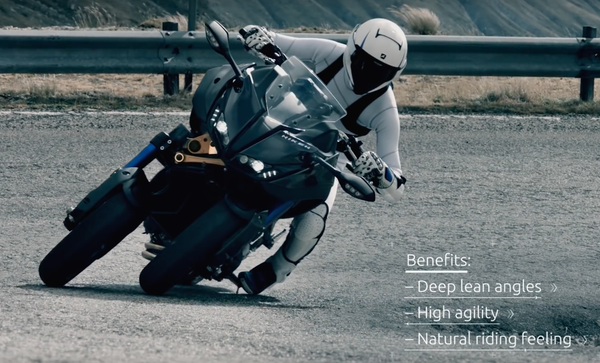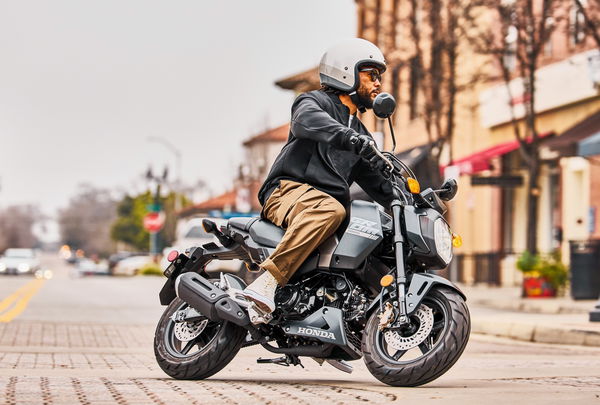Honda Riding Assist-e is even madder as a patent
Design renders give a glimpse under the skin of Honda’s self-balancing electric prototype bike
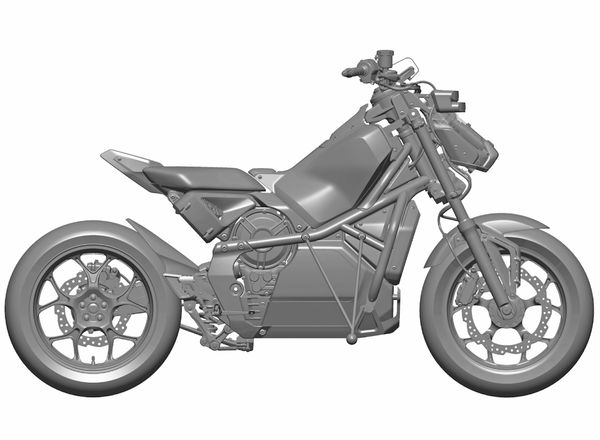
It would be easy to see Honda’s Riding Assist concept bike and its electric follow-up, the Riding Assist-e, as little more than a party trick. But they could actually be a significant step forward for motorcycling and these new patent images give a glimpse of the under-the-skin workings of the self-balancing technology they feature.
While it’s very impressive to see a bike balance itself while completely stationary, without resorting to heavy gyroscopes to do it, it might be initially hard to see what the point of the exercise is. But it’s actually a logical progression from the fast-advancing traction control, stability control and anti-lock braking systems that are arguably the hottest technological battlefield for today’s bikes.
Although unthinkable just a handful of years ago, the growth of these automated systems – up to and including Yamaha’s MotoBot bike-riding robot – mean a bike that’s virtually impossible to crash doesn’t seem so far over the horizon now.
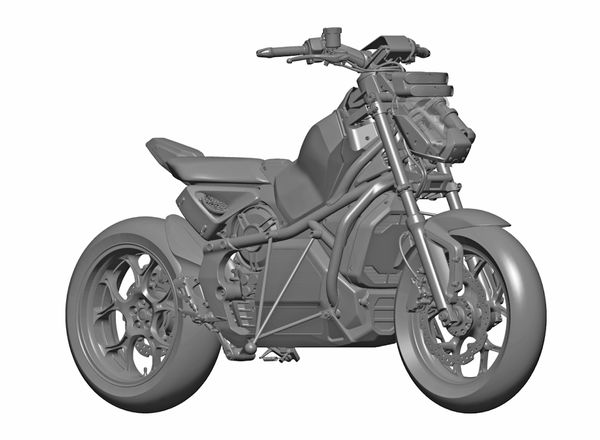
And that’s a massive step for motorcycling and its acceptance on a wider scale. Ask most non-riders why they won’t consider a bike and the perceived risk is almost certain to be their number one concern.
Honda’s Riding Assist system, which adds a computer-controlled steering system between the bars and the front wheel, is the next step. Modern bikes can already intervene in your application of the throttle and brakes, but to really save us from ourselves they need to be able to override the stupidest of our steering mistakes as well.
The self-balancing aspect might seem like a gimmick, but as well as demonstrating that the system has reactions like a world-class trials rider, it could also eliminate even more of the barriers against bike use. If a novice could jump on a bike with zero fear of toppling off it, even if they come to a halt without putting a foot down, then it becomes as user-friendly as a car while offering all the congestion-busting and emissions-reducing advantages of a bike.
These new design patents, just published on the European Union Intellectual Property Office website, show a little more of how the system works. The images show the second version of the Riding Assist concept – the electrically-powered ‘e’ model – but strip away its paint. That means you can see through the nose cowling, which was simply a glossy black on the actual concept bike.
Under what’s clearly designed to look reminiscent of a conventional bike’s headlight there are servo motors that operate both the self-steering system – the bars aren’t directly connected to the forks – and the secondary geometry-altering mechanics. These allow the bike to radically alter its fork angle to a chopper-like rake when it’s doing its low-speed balancing antics. Doing so means that small movements of the steering do more to move the bike’s centre of gravity from side-to-side, while simultaneously reducing the actual steering effect.
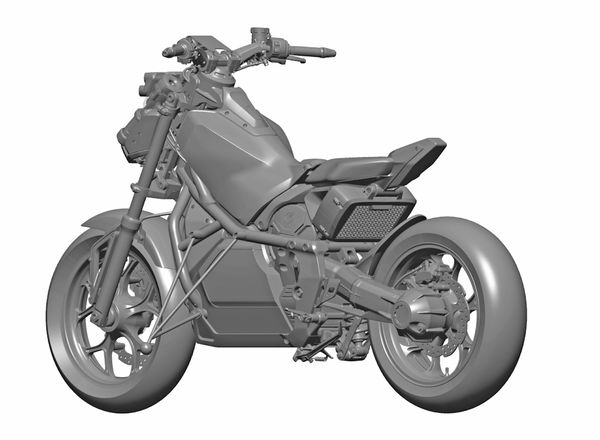
Notably, the design drawings also incorporate bolted-on crash bars that prevent the bike from toppling over too far if the system doesn’t achieve its objectives. These weren’t seen on last year’s concept bike, but must have been used during its development as the bugs were chased out of the system.
While the designs shouldn’t be taken as evidence that the Riding Assist-e is going to make production – it almost certainly isn’t, at least in anything like this form – they’re a fascinating glimpse behind the scenes of one of the most radical projects in motorcycling at the moment.
